Australia is home to some amazing birdlife. In this article, you will meet 10 famous Australian birds that have become icons for all the right or all the wrong reasons. Two are flightless, one will attack without prejudice, and one will steal the food right off your plate! Settle in and let’s meet these feathered Australians.
1. Emu

Perhaps the most iconic Australian bird, the flightless Emu has become so famous it even graces the Australian coat of arms and appears on the country’s 50-cent coin. It is the second-largest bird in the world and the second-fastest runner, reaching speeds of up to 30 miles an hour (48.2 km/hr).
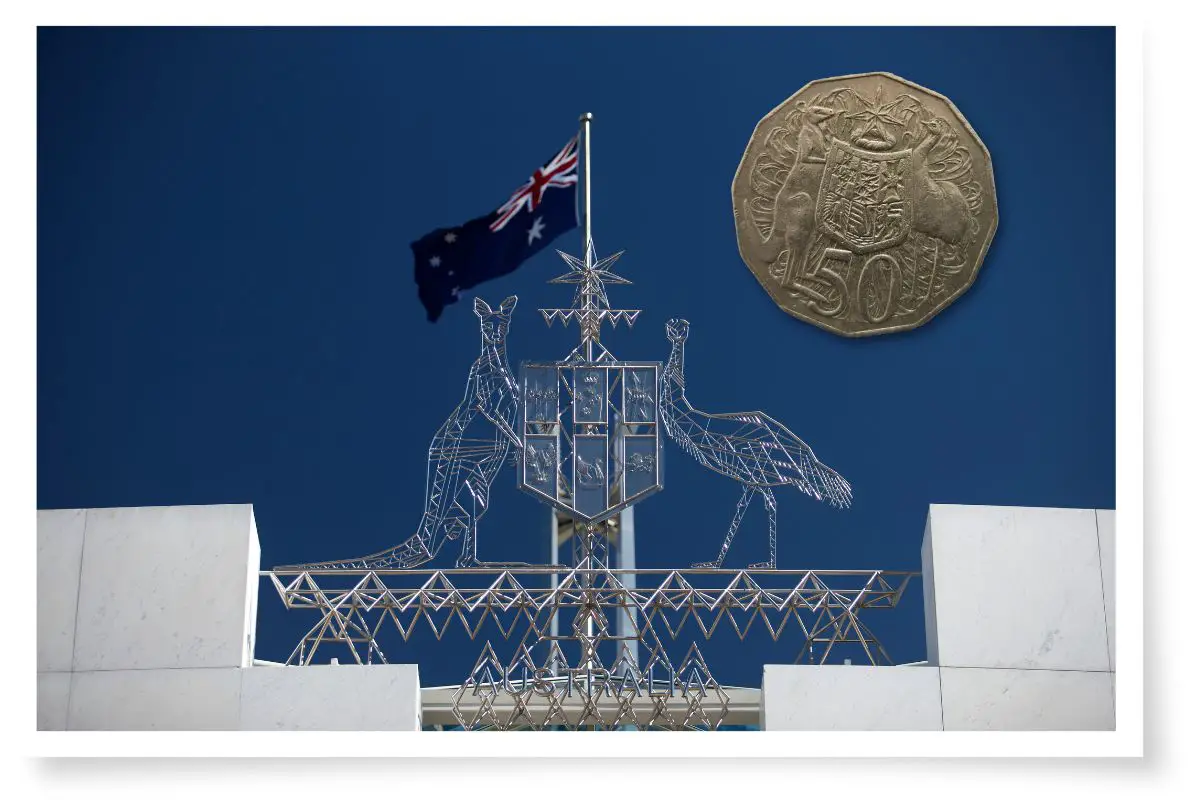
Emus roam wild in woodland, scrub, and open country in many parts of Australia. They avoid arid areas of the outback where annual rainfall is less than 600 mm and also avoid heavily populated zones.
Emus are often thought of as being quite dumb animals but this reputation is not deserved. They have a remarkable ability to find water and will travel up to 450 km in search of it.
An interesting thing about Emus is that they are quite good swimmers. Though their awkward-looking bodies don’t seem equipped for water, they are often seen crossing rivers with ease.

2. Laughing Kookaburra
There are not many places you can go in Australia without hearing the signature “laugh” of this famous Australian bird. The Laughing Kookaburra, commonly known as simply the Kookaburra, is a bird Australia would not be the same without.

There are 5 species of the kookaburra, though the laughing kookaburra is the most common and well-known. The moment you hear its call, you understand why it got the name laughing kookaburra.
Laughing kookaburras can be heard cackling every dawn and dusk. They live in groups that comprise a mated pair and 1-7 helpers. At our old house in Gembrook, Victoria, I was lucky enough to have a family of them right outside my office window.
I could crack the window open a few inches, stick my camera lens out and photograph them feeding their young and foraging on the front lawn.

Laughing kookaburras eat a wide variety of things, including small prey such as earthworms, grubs, and snails, and larger animals like frogs, snakes, and lizards. In the image above, they are sharing a grub or caterpillar.
Learn about some Australian birds that eat fish in this article on my blog.
3. Crimson Rosella
The crimson rosella is one of Australia’s most colorful birds. Its vibrant red, blue, and black plumage is a common sight in coastal and mountain areas of the country’s southeast. Crimson rosellas have also been introduced to New Zealand and Norfolk Island.

These members of the Psittaculidae family (Old World Parrots) are famous for being quite relaxed around people and will regularly hand-feed. They eat the seeds of native pines, blue figs, acacias, and other smaller native and introduced plants.
The sounds of the crimson rosella are among my favorite of any Australian bird. Their clucks and chirps were always welcome sounds at our bird feeder in the front garden. Watch the video below to see them feeding with Common Bronzewing Pigeons:
There are several color forms of the crimson rosella. Birds in northern Queensland are generally smaller and darker. A yellow variety can be found in northern Victoria, southern New South Wales, and South Australia. Adelaide rosellas range from yellow with a reddish wash to dark orange.
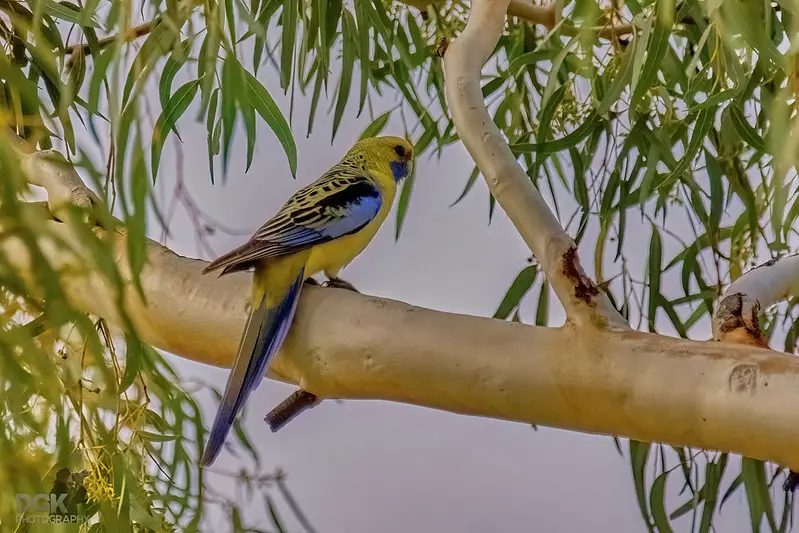
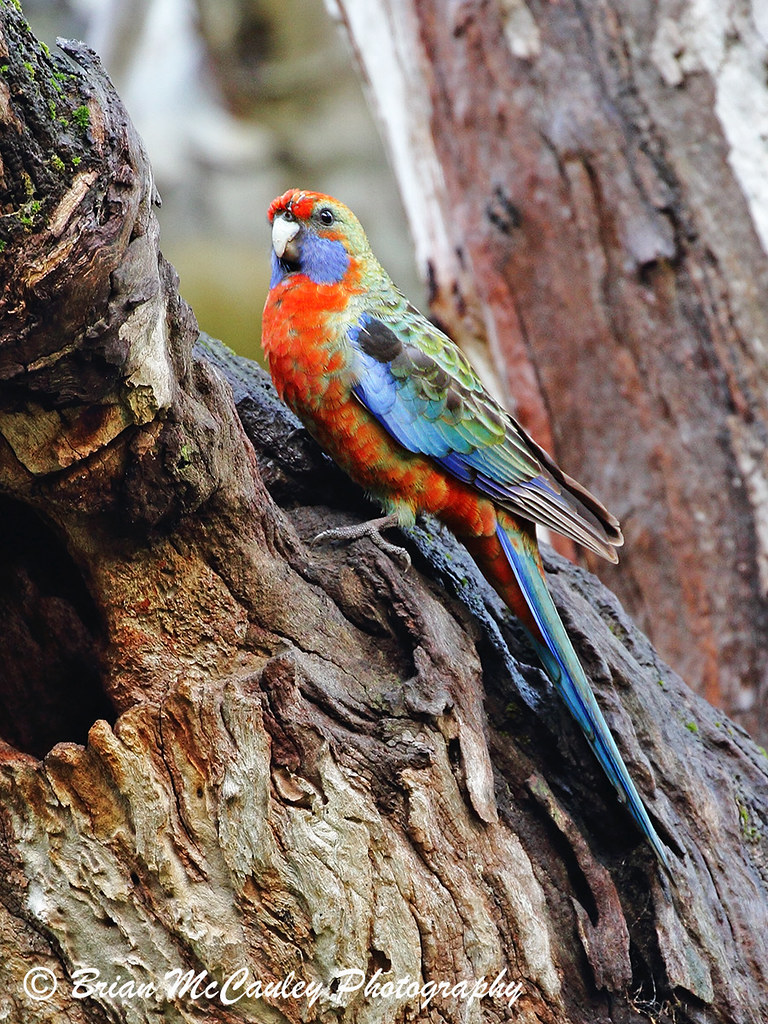
Adelaide Rosella [right] by Brian McCauley from Flickr. Attribution-NonCommercial 2.0 Generic (CC BY-NC 2.0)
The yellow morph of the crimson rosella is similar to the Eastern Rosella. These are another colorful Australian parrot that is in the same family as crimson rosellas.
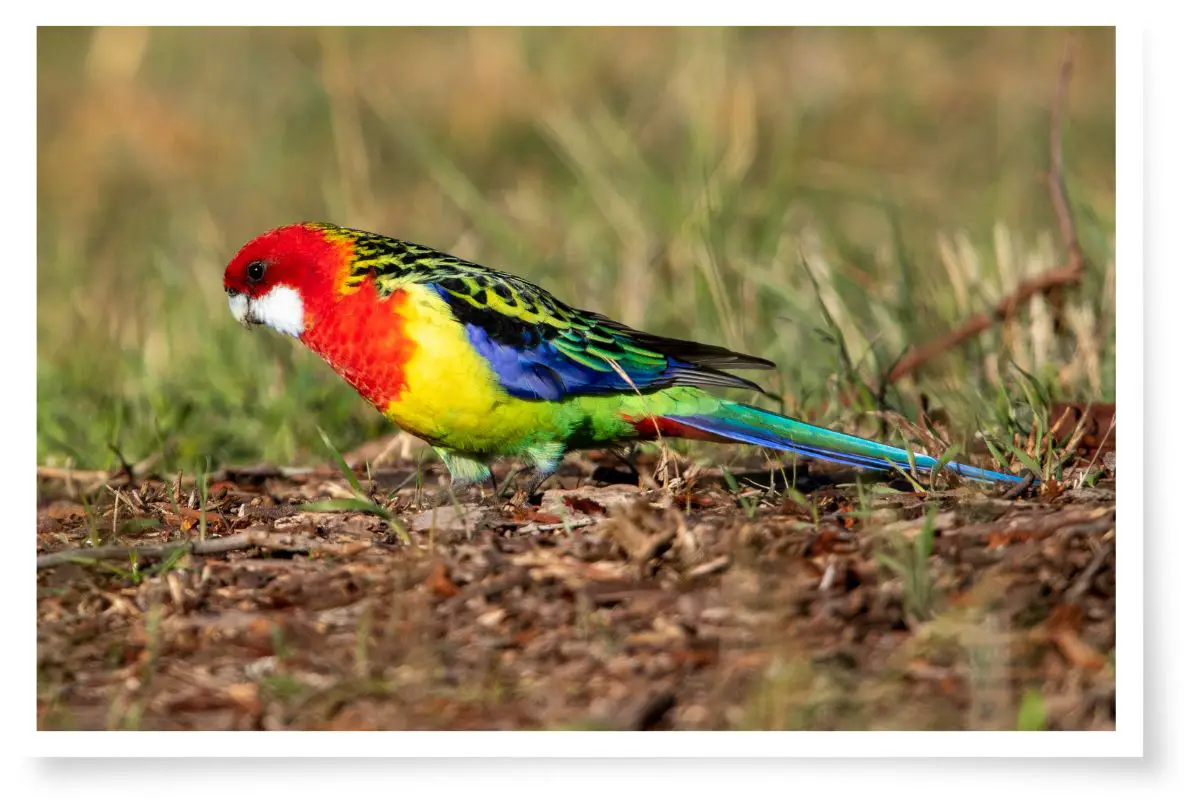
4. Southern Cassowary
The southern cassowary is famous for many reasons, in particular for being a very dangerous bird. They join ostriches in being the only birds worldwide to have caused human deaths by physical attack. These prehistoric-looking birds are endemic to the tropical rainforests of northeastern Queensland.
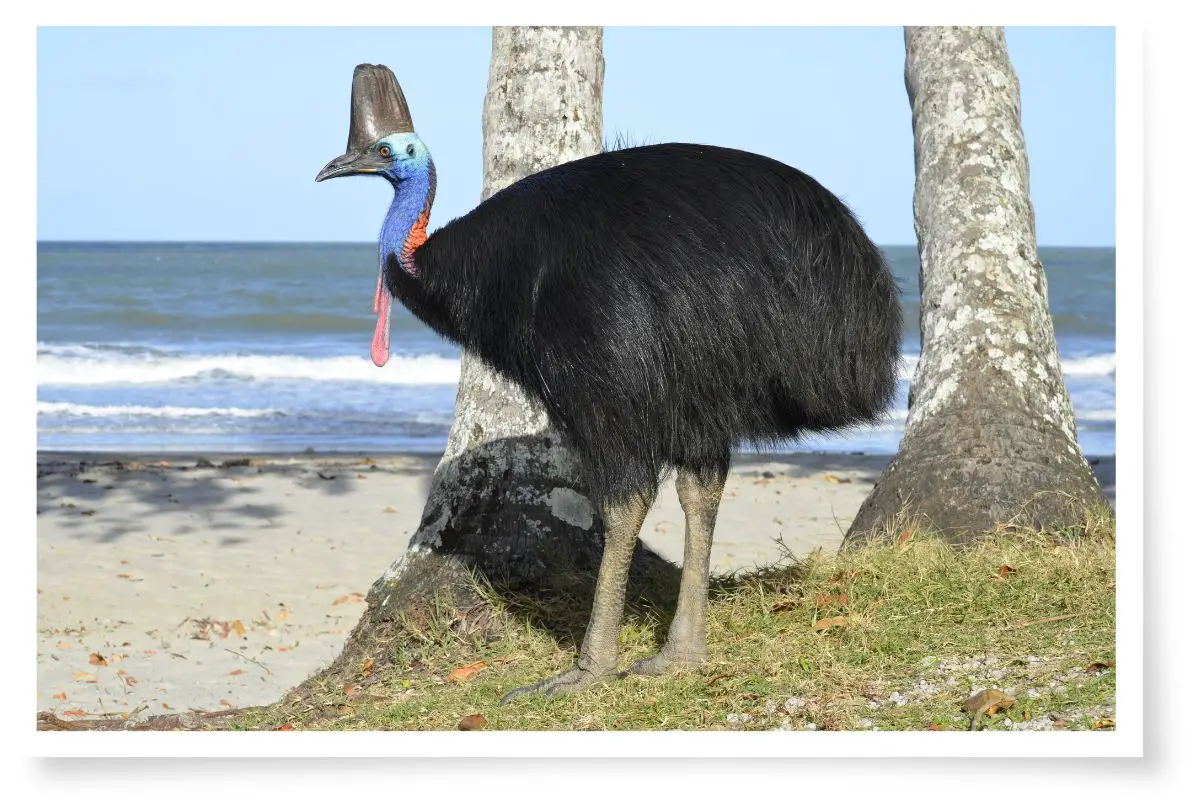
Standing 130-180 cm (4.3-5.9 ft) tall and sporting dagger-like claws on their inner toes that may be up to 125 mm (5 in.) long, southern cassowaries are indeed an intimidating animal.
Their savage reputation is unfounded. A study published in the Cambridge University Press in 2001 found that in 73% of attack cases, the birds seemed to be expecting or soliciting food from humans. In other cases, they were defending food (5%), defending themselves (15%), or defending their chicks or eggs (7%).
By feeding birds, we change their natural behavior and one of the side-effects of this is aggression. It is much better to simply sit back and observe birds rather than feed or interact with them.
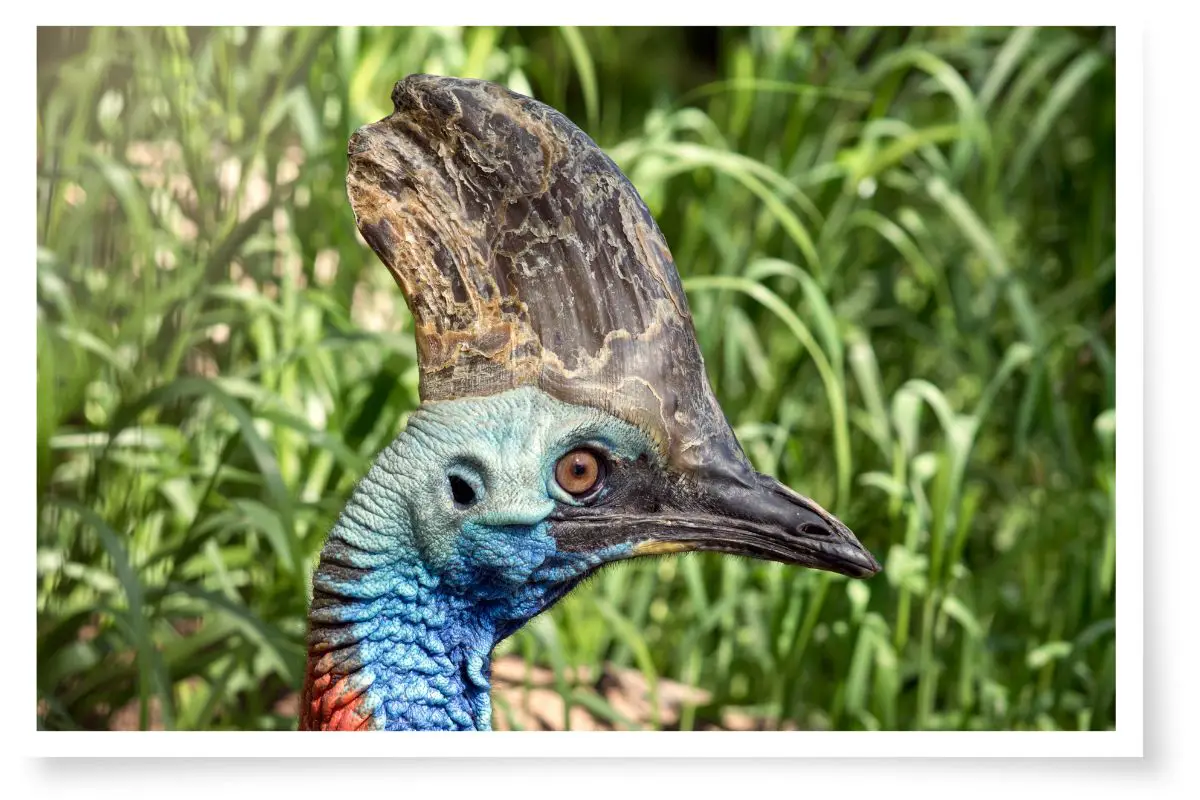
The large bony protrusion on a southern cassowaries head is called a casque. These can be up to 18 cm (7 in.) in length and are made of keratin, the same substance found in our hair and nails.
5. Superb Fairywren
From the large and scary, we now move to the small and cute. The Superb Fairywren, affectionately known as the blue wren is our next famous Australian bird. These small birds, found in east and southeast Australia, are famous solely for being cute.
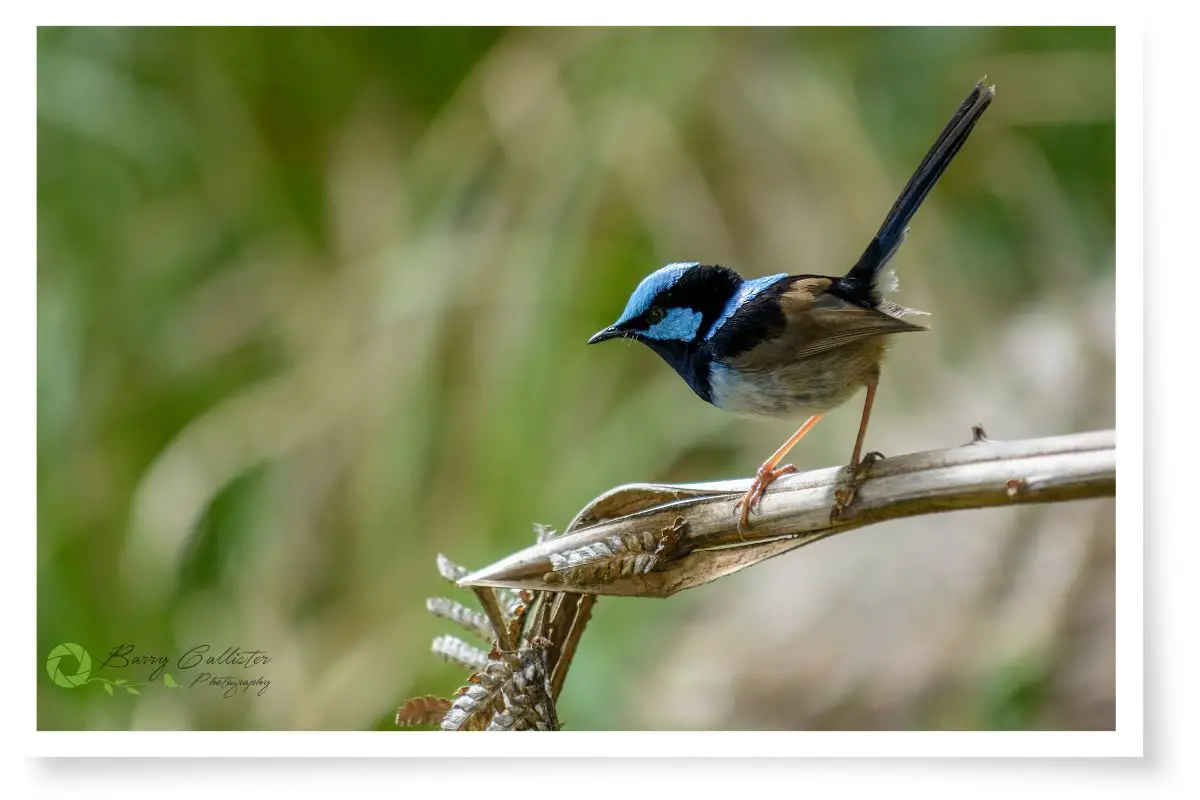
Between 15 and 20 cm (5.8-7.9 in.) in length with iridescent blue crests, ear tufts, and backs, the male superb fairywrens are stunning little birds. These birds used to inhabit open eucalypt forests but as this type of habitat has been largely cleared for agriculture, they live in shrubs and weeds in suburban parks and gardens.
Superb fairywrens are often seen in small groups consisting of one male and several female wrens. For this reason, males are often thought to have a harem of females following them around. However, many of these brown ‘jenny wrens’ are often immature males that have not yet grown their breeding plumage.
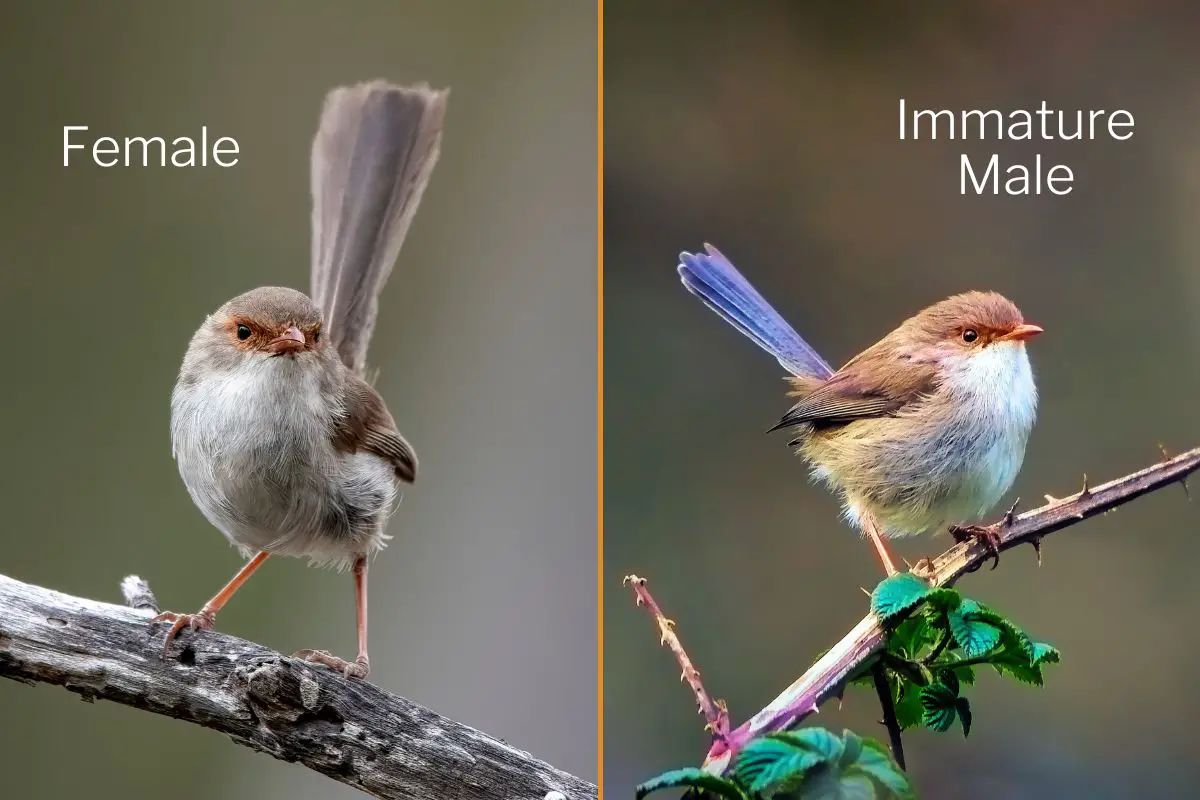
The superb fairywren was the winner of The Guardian/Birdlife Australia’s ‘Australian Bird Of The Year’ in 2021. More than 400,000 votes were cast for these tiny birds to snatch the title over the Tawny Frogmouth. This biannual competition has been running since 2017.
6. Australian Magpie
The Australian Magpie took out the inaugural title of Australian Bird Of The Year. This was surprising as it is undoubtedly the most hated bird during Spring due to its terrifying swooping behavior.
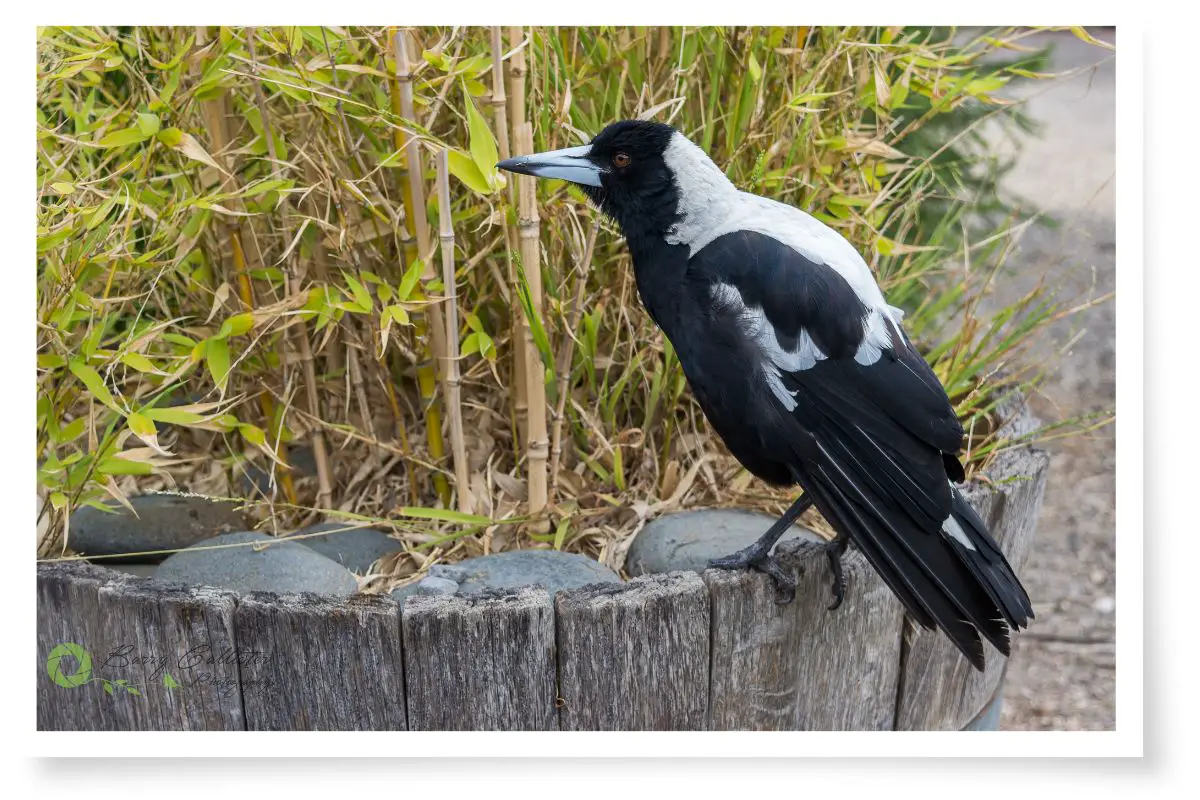
This bird’s fame lies in the relentless defense of its nest and offspring during the breeding season. From July to November; cyclists, walkers, and joggers Australia-wide exercise in constant fear of being swooped by these birds.
I have been on the receiving end of that broad, sharp beak and come off second-best. A magpie swooped at me and pecked my head when I was around 6 or 7 years old. It made a nasty hole in my scalp and left me fearful of them for quite some time.
Along with the call of the laughing kookaburra, the magpie’s warble is synonymous with Australia. In recent times, magpies have also become famous for their mimicking abilities; something they have been unknown for in the past. They can readily imitate other bird species; animals such as dogs, alarms, and other man-made sounds.
7. Superb Lyrebird
This Australian bird is famous for its mimicking abilities. The superb lyrebird is so good at copying the calls of other birds that it is hard to tell the difference between them and the species they mimic.

Superb lyrebirds are found in the moist forests of southeastern Australia. Normally quite elusive, they are very hard to spot. You will hear them before you see them as they sing a variety of different bird songs in succession; occasionally blending in some car alarm, chainsaw, or mobile phone noises too.
The superb lyrebird features on the Australian 10-cent coin; its lyre feathers and other whispy tailfeathers fanning up to cover the coin’s surface.

Both sexes of lyrebirds imitate calls they hear in their environment. During mating displays, male birds utter a series of buzzing and clicking noises.
The alarm call of the superb lyrebird is an ear-piercing shriek that would make any animal in the immediate area take notice. The call in the recording below was made in response to the presence of a feral cat the recordist had just been trying to photograph from his car:
Discover more about how birds communicate in this article here on my blog.
8. Sulphur-crested Cockatoo
In my opinion, these are the clowns of the Australian bird world. Sulphur-crested Cockatoos have a cheeky demeanor that gets them into all sorts of trouble around homes in the Australian bush; they are more infamous than famous.
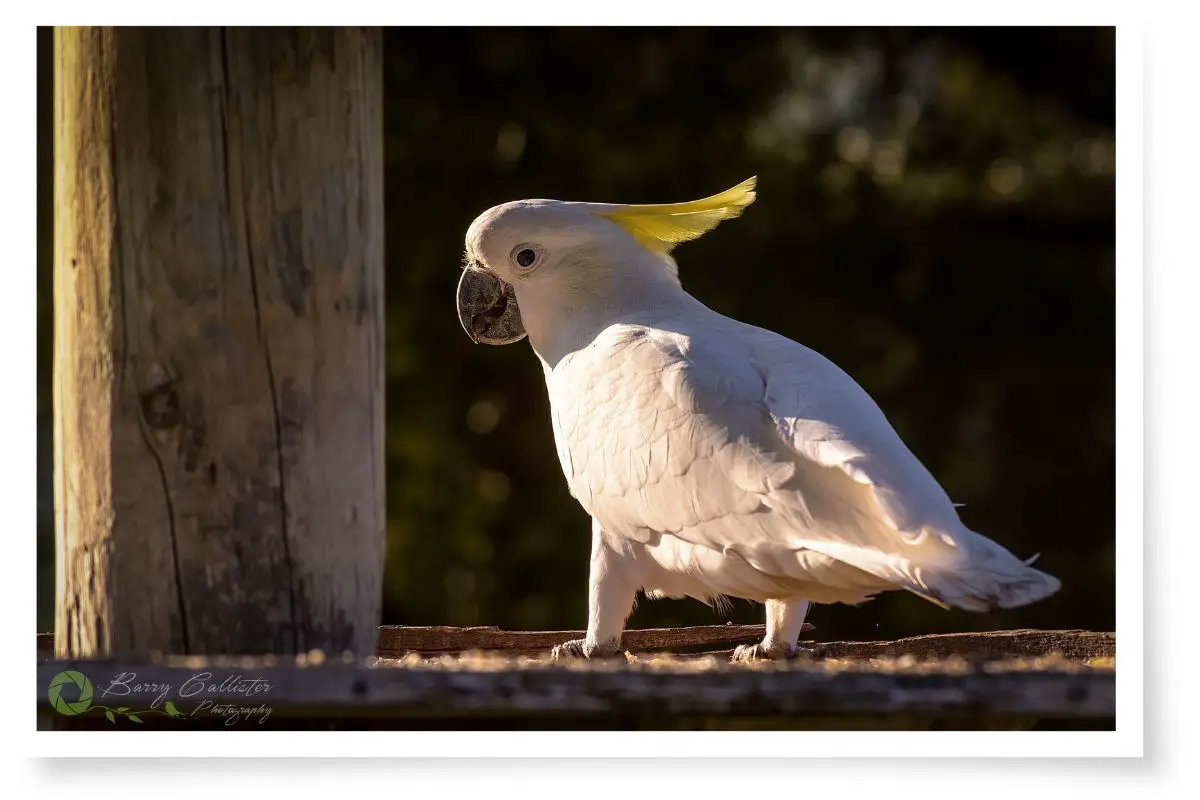
Some people hate them for the amount of noise they make. They often congregate in flocks of several hundred birds and the sharp, screeching noise they make can be very irritating when multiplied by such a number.
Sulphur-crested cockatoos cause a lot of damage with their strong, gnawing bills. They have taken to destroying decking boards, window frames, doors, outdoor settings, cubby houses, and anything else they can hack away at.
While upsetting for the owners of the destroyed property, if it were not for humans feeding them in the first place, this would not happen. If a person feeds cockatoos, they will flock to the area and decide that everything else is food also. Often, when the food source is removed, the cockatoos will move to another area.
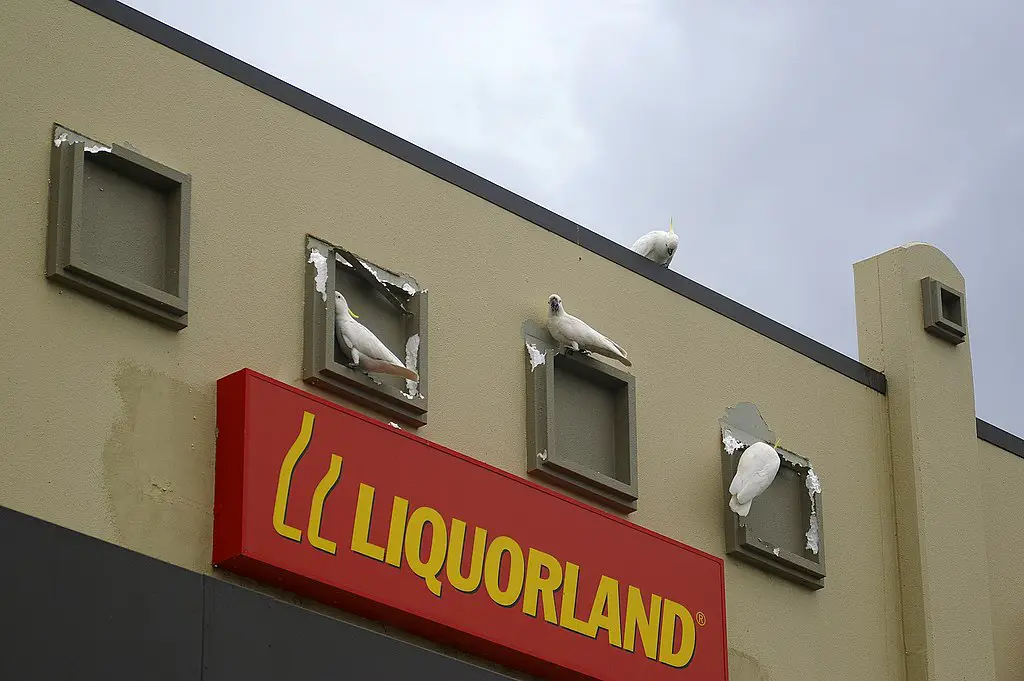
Despite their love-hate relationship with humans, Sulphur-crested cockatoos are an Australian icon. They are intelligent birds also, capable of being trained to do tricks and learn to speak hundreds of words.
9. Little Penguin
Little Penguins are one of three flightless birds of Australia; the other two you have already met earlier in the article. They are also the smallest penguin in the world.
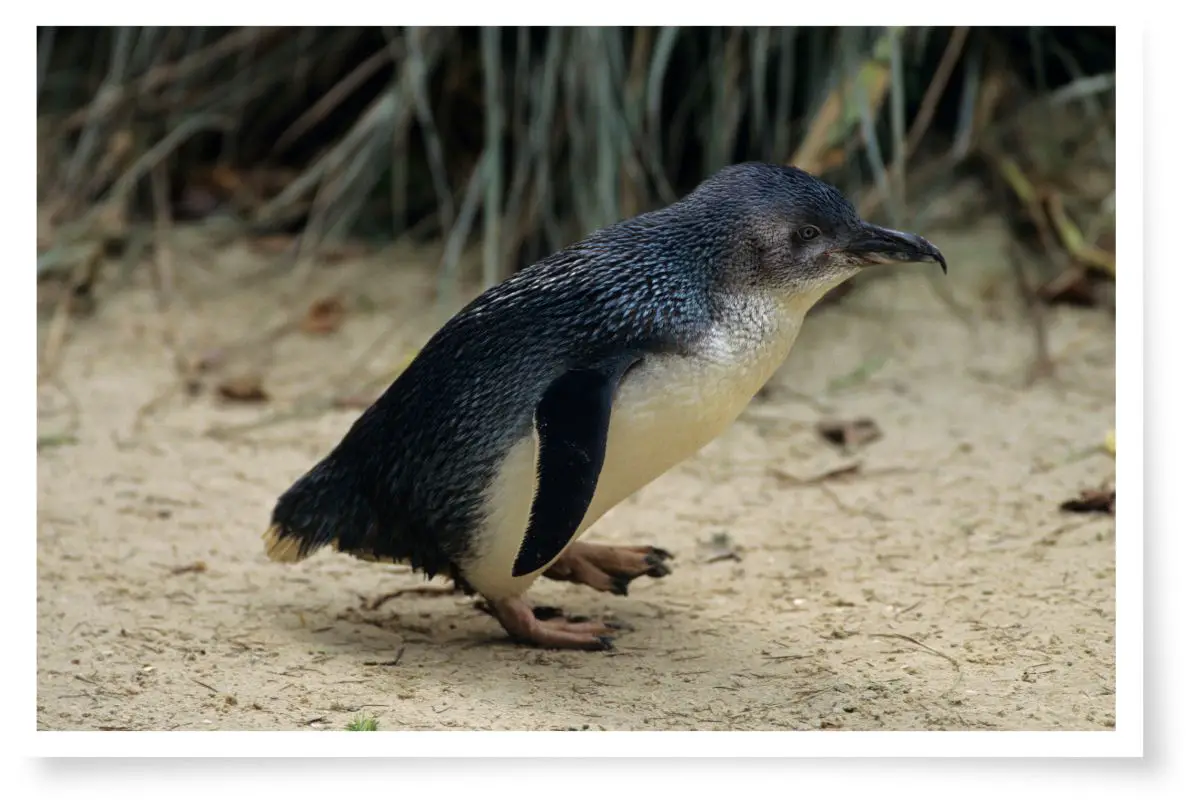
These adorable little birds were called fairy penguins up until 2006. In a moment of excessive political correctness, Sea World on the Gold Coast in Queensland decided the name ‘fairy’ penguin might be offensive to the gay community. They started calling them little penguins instead and the name stuck.
Little penguins are the star of the show at the nightly Penguin Parade on Victoria’s Phillip Island. Every night of the year since the 1920s, tourists have flocked to the Phillip Island Nature Park to see the penguins coming back to shore at sunset.
Little penguins were also the co-stars of the 2015 Australian film Oddball, starring Shane Jacobson. The movie was based on the true story of an eccentric chicken farmer who trained a Maremma Sheepdog (Oddball) to protect Little Penguins and their nesting sites off the coast of Warnambool in Victoria.

I have memories of braving the cold at Phillip Island with my family as a child to watch the magic of the penguins waddling ashore. It is one of Victoria’s best tourist attractions.
References
- Which Bird Is The Fastest Runner? – audubon.org
- Cassowary – Wikipedia
- Stay safe from swooping magpies – environment.des.qld.gov.au
- Birds Of The World – The Cornell Lab Of Ornithology

